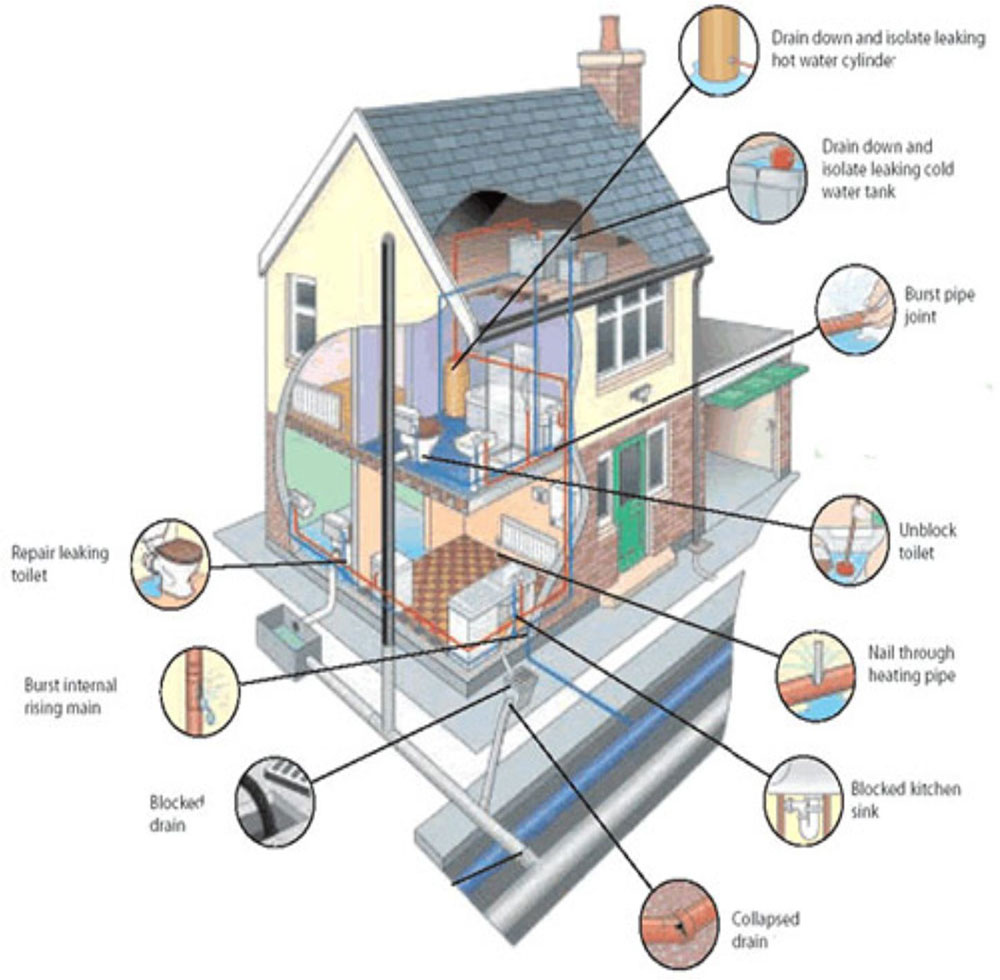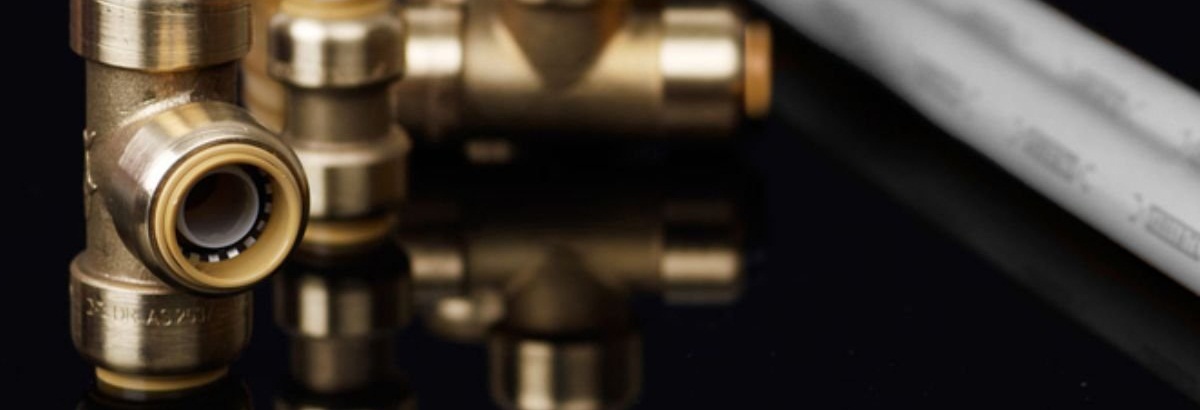What You Need to Know About Your House's Plumbing System Anatomy
What You Need to Know About Your House's Plumbing System Anatomy
Blog Article
Any individual maintains their own unique piece of advice with regards to Understanding Your Home's Plumbing Anatomy.

Recognizing exactly how your home's pipes system works is crucial for each home owner. From providing tidy water for alcohol consumption, cooking, and showering to safely removing wastewater, a well-maintained plumbing system is essential for your family's health and convenience. In this thorough overview, we'll discover the detailed network that composes your home's pipes and deal ideas on maintenance, upgrades, and managing usual issues.
Introduction
Your home's pipes system is greater than simply a network of pipelines; it's an intricate system that guarantees you have accessibility to tidy water and efficient wastewater elimination. Understanding its elements and just how they interact can aid you protect against pricey repairs and ensure everything runs smoothly.
Basic Elements of a Pipes System
Pipelines and Tubes
At the heart of your plumbing system are the pipes and tubes that lug water throughout your home. These can be constructed from various materials such as copper, PVC, or PEX, each with its advantages in terms of toughness and cost-effectiveness.
Components: Sinks, Toilets, Showers, etc.
Components like sinks, toilets, showers, and bath tubs are where water is utilized in your home. Recognizing exactly how these components link to the plumbing system aids in diagnosing troubles and preparing upgrades.
Shutoffs and Shut-off Points
Shutoffs control the circulation of water in your pipes system. Shut-off valves are critical during emergency situations or when you require to make repairs, enabling you to separate parts of the system without interfering with water flow to the entire home.
Water System
Key Water Line
The major water line links your home to the metropolitan water or a private well. It's where water enters your home and is distributed to various fixtures.
Water Meter and Pressure Regulatory Authority
The water meter procedures your water use, while a stress regulatory authority ensures that water flows at a secure stress throughout your home's plumbing system, avoiding damages to pipelines and components.
Cold Water vs. Warm water Lines
Recognizing the difference in between cold water lines, which provide water straight from the major, and hot water lines, which bring heated water from the water heater, helps in troubleshooting and planning for upgrades.
Drainage System
Drain Pipes and Traps
Drain pipes lug wastewater far from sinks, showers, and commodes to the drain or septic tank. Traps prevent sewage system gases from entering your home and likewise catch debris that could create obstructions.
Ventilation Pipelines
Air flow pipes permit air into the drain system, avoiding suction that can slow down water drainage and trigger catches to vacant. Proper air flow is vital for maintaining the honesty of your plumbing system.
Relevance of Appropriate Drainage
Making sure proper drain prevents backups and water damages. Routinely cleaning up drains pipes and preserving catches can avoid costly repair services and extend the life of your pipes system.
Water Heating System
Kinds Of Hot Water Heater
Water heaters can be tankless or conventional tank-style. Tankless heating units warmth water on demand, while containers store heated water for instant usage.
How Water Heaters Link to the Plumbing System
Comprehending how water heaters link to both the cold water supply and hot water distribution lines helps in diagnosing problems like inadequate hot water or leakages.
Upkeep Tips for Water Heaters
Frequently flushing your hot water heater to get rid of sediment, checking the temperature level settings, and inspecting for leaks can prolong its life expectancy and enhance energy efficiency.
Common Pipes Problems
Leakages and Their Causes
Leaks can occur due to aging pipelines, loosened fittings, or high water pressure. Addressing leaks without delay protects against water damages and mold growth.
Obstructions and Clogs
Blockages in drains and toilets are frequently triggered by purging non-flushable products or a buildup of oil and hair. Using drainpipe screens and bearing in mind what drops your drains can protect against blockages.
Indicators of Plumbing Troubles to Look For
Low water stress, sluggish drains pipes, foul odors, or unusually high water costs are signs of potential pipes problems that must be addressed quickly.
Pipes Maintenance Tips
Routine Inspections and Checks
Schedule annual pipes evaluations to capture issues early. Search for indicators of leaks, corrosion, or mineral accumulation in taps and showerheads.
DIY Maintenance Tasks
Straightforward tasks like cleaning faucet aerators, checking for toilet leaks using dye tablets, or insulating subjected pipes in cold climates can prevent major plumbing issues.
When to Call a Professional Plumber
Know when a plumbing concern calls for specialist proficiency. Trying intricate fixings without proper expertise can bring about more damage and higher repair expenses.
Upgrading Your Pipes System
Factors for Upgrading
Upgrading to water-efficient fixtures or changing old pipelines can boost water quality, reduce water bills, and enhance the value of your home.
Modern Pipes Technologies and Their Benefits
Discover modern technologies like smart leak detectors, water-saving commodes, and energy-efficient hot water heater that can conserve cash and lower ecological influence.
Price Factors To Consider and ROI
Determine the in advance expenses versus long-lasting savings when considering pipes upgrades. Lots of upgrades spend for themselves with minimized utility bills and fewer repairs.
Ecological Influence and Preservation
Water-Saving Fixtures and Home Appliances
Setting up low-flow taps, showerheads, and commodes can dramatically reduce water use without compromising performance.
Tips for Minimizing Water Use
Basic practices like dealing with leaks without delay, taking shorter showers, and running full tons of laundry and meals can preserve water and lower your energy expenses.
Eco-Friendly Plumbing Options
Think about sustainable pipes materials like bamboo for floor covering, which is durable and green, or recycled glass for counter tops.
Emergency situation Preparedness
Actions to Take During a Pipes Emergency situation
Know where your shut-off valves are located and exactly how to turn off the water system in case of a burst pipeline or significant leak.
Relevance of Having Emergency Situation Contacts Convenient
Keep get in touch with information for local plumbing technicians or emergency services conveniently available for fast feedback during a pipes situation.
Do It Yourself Emergency Fixes (When Suitable).
Short-term solutions like utilizing duct tape to patch a dripping pipe or positioning a container under a dripping tap can minimize damages until a specialist plumbing technician gets here.
Conclusion.
Comprehending the composition of your home's pipes system empowers you to keep it efficiently, conserving money and time on fixings. By following routine upkeep regimens and remaining informed concerning modern plumbing innovations, you can guarantee your pipes system operates effectively for several years ahead.
HOW YOUR PLUMBING SYSTEM WORKS
Which Pipes Do What?
Blue lines = fresh water supply entering the building
Red lines = hot water supply entering the building
Grey lines = pipes carrying waste away from the building and venting pipes carrying gases away from the building (through the roof)
YOUR MAIN PLUMBING SYSTEMS
There are two main plumbing systems that support your home s basic plumbing needs one that brings clean water into your home, and one that sends dirty water away from your home. Connected to the toilet, bath, shower, and other faucets in your home, these two systems keep your water flowing in the right directions.
ACCESSING FRESH WATER
Fresh and clean water is brought into your home through the main water supply line . Filtered through one pipe, this water is pressured to flow into the various fixtures in your home at any given time.
This water can be sourced from a well located on your property, a pond or river (mostly cottages), or, as in most cases, from the city s municipal water treatment centre. However, it is important to note that water that is untreated, such as the water siphoned from ponds or rivers, may not be safe to drink. Personal water supplies always need to be treated for hardness and contaminants before consumed.
MUNICIPAL WATER SUPPLIES
Improve taste and odour
Remove sediment
Eliminate hardness
Reduce chlorine
COLD WATER SUPPLY VS. HOT WATER SUPPLY
Cold water flows into your home or building through the service line, which then distributes hot or cold water to your fixtures. This line is most commonly run through a central column that runs floor to floor. Hot water runs in short and straight pipes as the longer the pipeline, the more heat that will be lost in the transfer. Having shorter pipes also allows residents to access hot water more quickly.
WASTE WATER SYSTEM
Your wastewater system is divided into two parts pipes that send wastewater away from your home and venting pipes that send sewer gas away from your home. Sewage water travels through pipes that flush the water and waste towards local sewers that are operated and managed by your city or town. Most sewer systems rely on gravity to move the wastewater to where it needs to go.
The further away from your toilet or sink, the larger wastewater pipes become. This allows for waste to be disposed of from various parts of your home or business at once without pipe blockages. The angle and flow of these pipes are also essential for keeping your waste pipes clear of build up.
https://harrisplumbing.ca/how-your-home-plumbing-system-works/

HOW YOUR PLUMBING SYSTEM WORKS
Which Pipes Do What?
YOUR MAIN PLUMBING SYSTEMS
There are two main plumbing systems that support your home s basic plumbing needs one that brings clean water into your home, and one that sends dirty water away from your home. Connected to the toilet, bath, shower, and other faucets in your home, these two systems keep your water flowing in the right directions.
ACCESSING FRESH WATER
Fresh and clean water is brought into your home through the main water supply line . Filtered through one pipe, this water is pressured to flow into the various fixtures in your home at any given time.
This water can be sourced from a well located on your property, a pond or river (mostly cottages), or, as in most cases, from the city s municipal water treatment centre. However, it is important to note that water that is untreated, such as the water siphoned from ponds or rivers, may not be safe to drink. Personal water supplies always need to be treated for hardness and contaminants before consumed.
MUNICIPAL WATER SUPPLIES
COLD WATER SUPPLY VS. HOT WATER SUPPLY
Cold water flows into your home or building through the service line, which then distributes hot or cold water to your fixtures. This line is most commonly run through a central column that runs floor to floor. Hot water runs in short and straight pipes as the longer the pipeline, the more heat that will be lost in the transfer. Having shorter pipes also allows residents to access hot water more quickly.
WASTE WATER SYSTEM
Your wastewater system is divided into two parts pipes that send wastewater away from your home and venting pipes that send sewer gas away from your home. Sewage water travels through pipes that flush the water and waste towards local sewers that are operated and managed by your city or town. Most sewer systems rely on gravity to move the wastewater to where it needs to go.
The further away from your toilet or sink, the larger wastewater pipes become. This allows for waste to be disposed of from various parts of your home or business at once without pipe blockages. The angle and flow of these pipes are also essential for keeping your waste pipes clear of build up.
https://harrisplumbing.ca/how-your-home-plumbing-system-works/
I found that review on Anatomy of a House: Understanding the Components while surfing around the web. Kindly take the opportunity to promote this content if you enjoyed it. I thank you for your readership.
Call Today Report this page